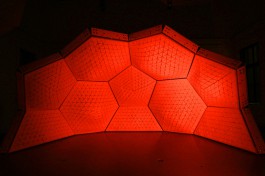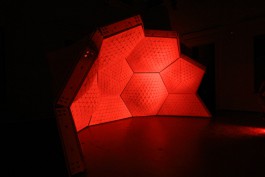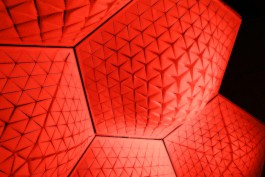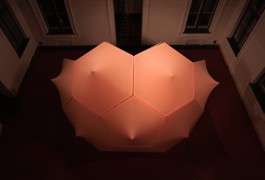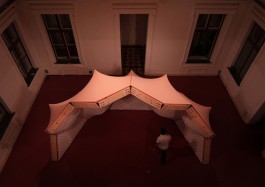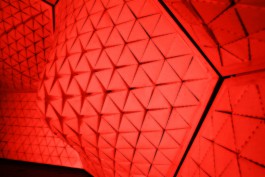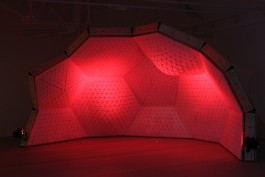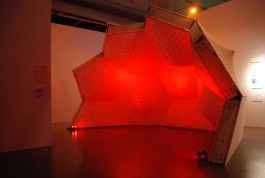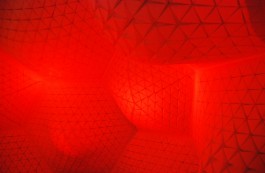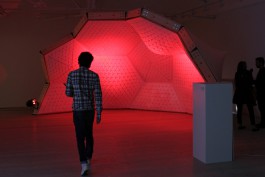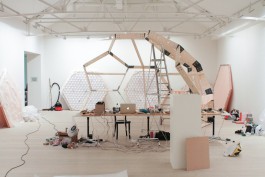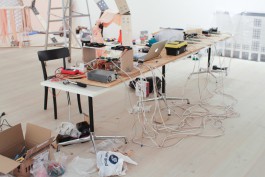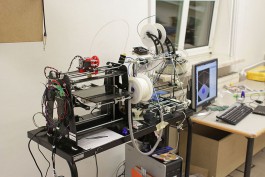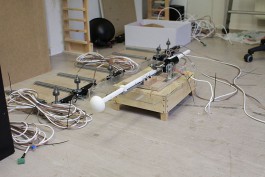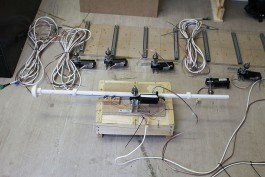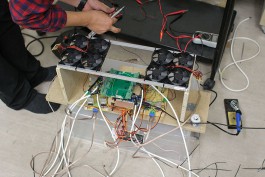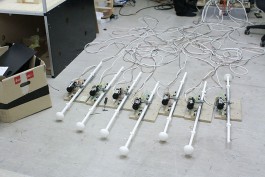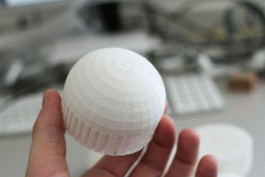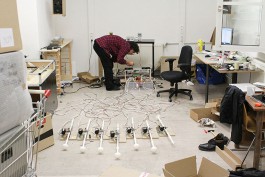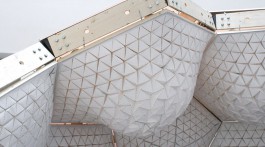We traditionally assume that the built environment, whether in the architectural or the urban scale influences our psyche. What if we can reverse that relationship? What if a kinetic architecture could establish a direct connection between the thoughts of its user and itself in order to reconfigure its physical boundaries accordingly? A research on different folding patterns and geometric structures lead to the creation of an environment that can act as a vessel for movement. As a result, Cerebral Hut became a game-space where the user controls the physical boundaries of his environment by his thoughts.
Cerebral Hut plugs into a vein of contemporary research that explores kinetic environments and the relationship between technology, movement and space, but it is the first of its kind that creates a moving architecture that directly responds to human thought. And consequently it creates a collective architectural form, which questions the static notions of space and conclusive perceptions of design. The Cerebral Hut has no final, or ideal design-form, its interior and exterior is in constant transformation triggered by user participation.
Design, Research: Guvenc Ozel, Alexandr Karaivanov
Programming, Mechanical Design V2: Onur Sönmez, Jaak Kaevats
Programming, Mechanical Design V1: Jona Hoier, Peter Innerhofer
Installation Team: Guvenc Ozel, Alexandr Karaivanov, Lena Krivanek, Peter Innerhofer
Administrative Support: Alexandra Graupner, Sabine Peternell
Special Thanks to: Greg Lynn, Gerald Bast, Klaus Bollinger, Esra Kahveci, Markus Murschitz
Photos courtesy of Guvenc Ozel, Bengt Stiller, Jaak Kaevats
